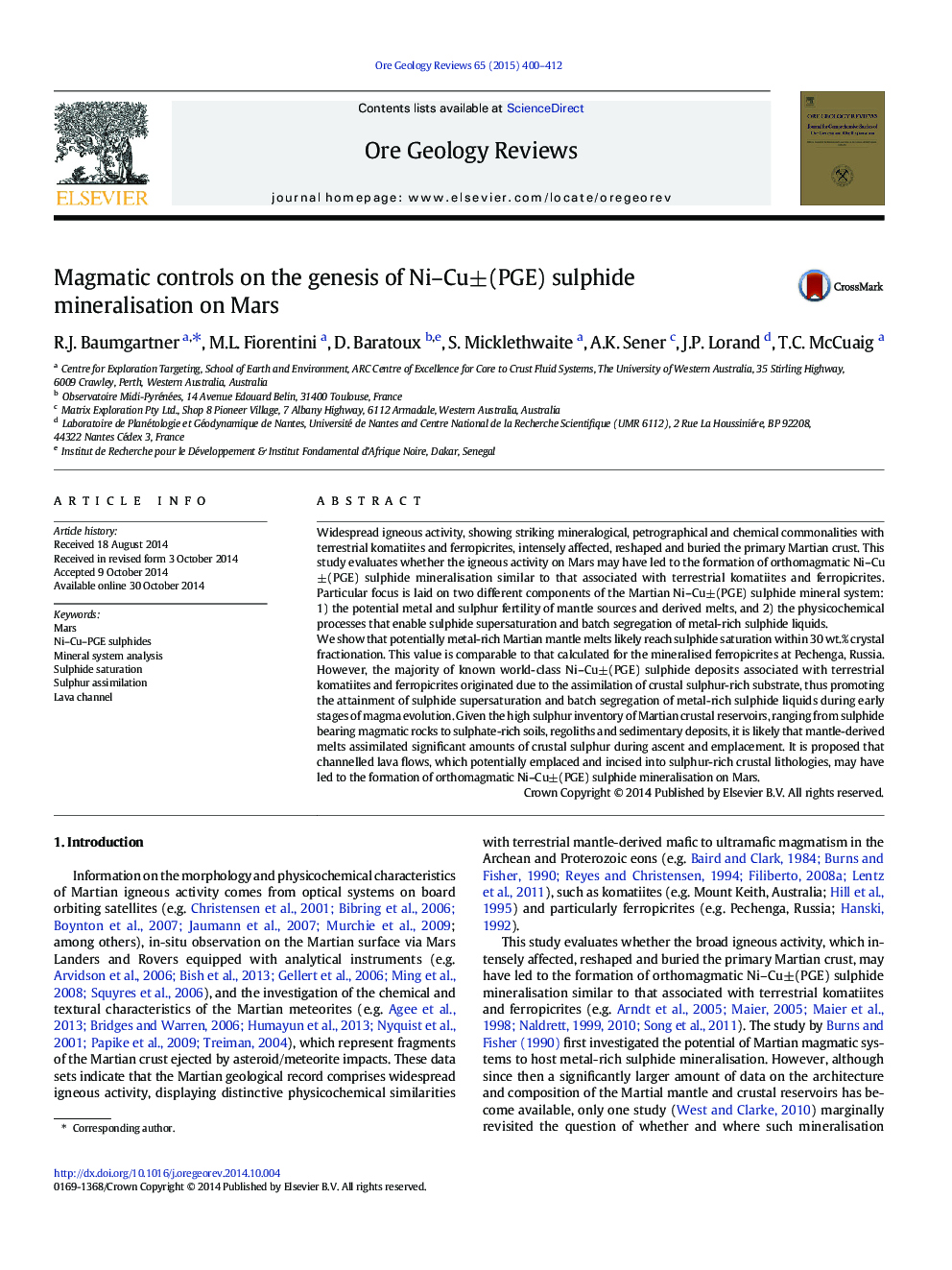| کد مقاله | کد نشریه | سال انتشار | مقاله انگلیسی | نسخه تمام متن |
|---|---|---|---|---|
| 4697265 | 1351868 | 2015 | 13 صفحه PDF | دانلود رایگان |

• Evaluation of the Ni–Cu-PGE sulphide potential in Martian lava flows.
• Primitive Martian melts contain significant amounts of Ni and PGE.
• Martian melts reach sulphide saturation within 30 wt.% crystal fractionation.
• Channelled Martian lavas potentially assimilated large amounts of crustal sulphur.
• Sulphur assimilation likely promoted metal-rich sulphide liquid segregation.
Widespread igneous activity, showing striking mineralogical, petrographical and chemical commonalities with terrestrial komatiites and ferropicrites, intensely affected, reshaped and buried the primary Martian crust. This study evaluates whether the igneous activity on Mars may have led to the formation of orthomagmatic Ni–Cu±(PGE) sulphide mineralisation similar to that associated with terrestrial komatiites and ferropicrites. Particular focus is laid on two different components of the Martian Ni–Cu±(PGE) sulphide mineral system: 1) the potential metal and sulphur fertility of mantle sources and derived melts, and 2) the physicochemical processes that enable sulphide supersaturation and batch segregation of metal-rich sulphide liquids.We show that potentially metal-rich Martian mantle melts likely reach sulphide saturation within 30 wt.% crystal fractionation. This value is comparable to that calculated for the mineralised ferropicrites at Pechenga, Russia. However, the majority of known world-class Ni–Cu±(PGE) sulphide deposits associated with terrestrial komatiites and ferropicrites originated due to the assimilation of crustal sulphur-rich substrate, thus promoting the attainment of sulphide supersaturation and batch segregation of metal-rich sulphide liquids during early stages of magma evolution. Given the high sulphur inventory of Martian crustal reservoirs, ranging from sulphide bearing magmatic rocks to sulphate-rich soils, regoliths and sedimentary deposits, it is likely that mantle-derived melts assimilated significant amounts of crustal sulphur during ascent and emplacement. It is proposed that channelled lava flows, which potentially emplaced and incised into sulphur-rich crustal lithologies, may have led to the formation of orthomagmatic Ni–Cu±(PGE) sulphide mineralisation on Mars.
Journal: Ore Geology Reviews - Volume 65, Part 1, March 2015, Pages 400–412